Recommended alternatives to replace damaged ash trees can be found in Ash Tree Alternatives.

History
The emerald ash borer (EAB) was first discovered in the United States near Detroit, Michigan, in summer 2002. Horticulturalists were puzzled by the sudden decline and loss of hundreds of ash trees, which they attributed to a nonnative, highly destructive beetle, Agrilus planipennis, commonly called the emerald ash borer.
The EAB originated in Asia, and most likely entered the United States in packing materials such as wooden crates made out of ash. It is now believed that the emerald ash borer has been in the United States since 1990 or 1991. The EAB was discovered in Illinois in June 2006, and as of October 2012, was found in 18 states across the country and Canada. Tens of millions of ash trees have been lost due to this invasive beetle.
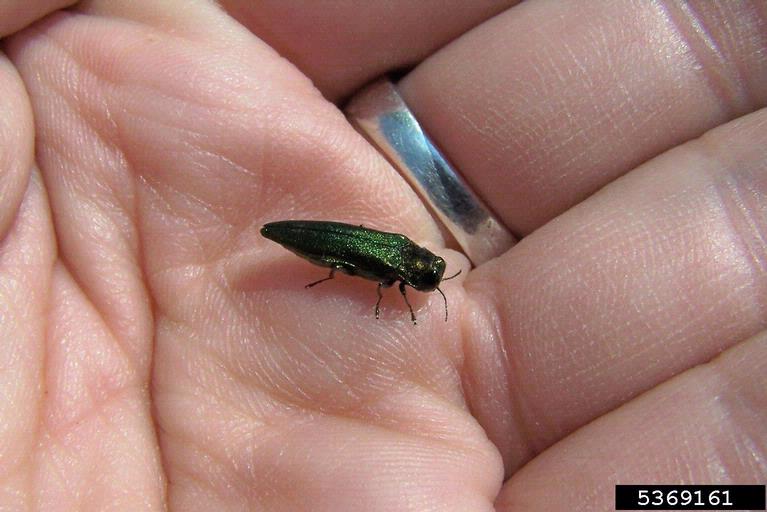 Biology and Life Cycle
Biology and Life Cycle
Adult beetles are elongated, approximately 1/8 to ½ inch in length, with metallic green wings and bronze bodies. The EAB adults begin to emerge from ash trees as the weather warms in the spring, and can continue emerging through August. Higher numbers are normally seen in June and early July. Adult beetles live for approximately three weeks. Beetles will hide in bark crevices and will occasionally feed on ash foliage, leaving small holes along leaf margins.
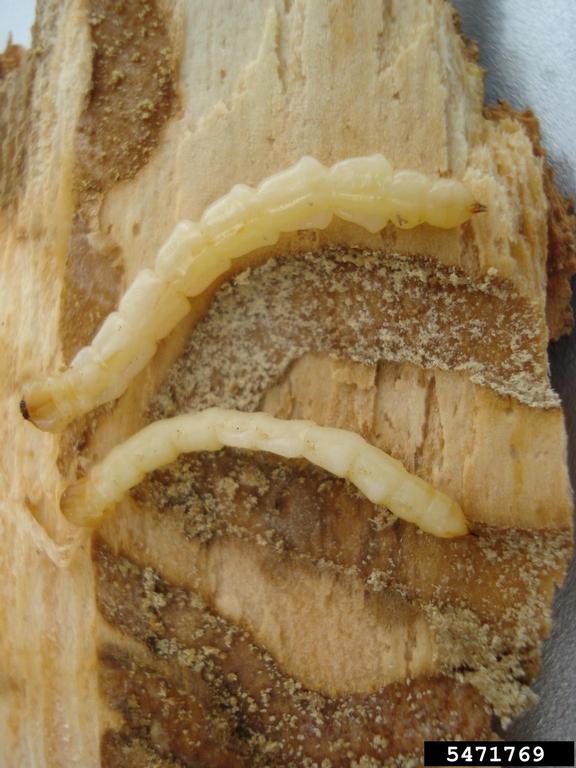 Shortly after emergence, adult beetles mate and lay eggs on the bark of ash trees (Fraxinus spp.) that are at least 1½ to 2 inches in diameter. Females will mate multiple times and can lay 60 to 90 eggs during their lifetime. Eggs hatch in approximately seven to ten days. After hatching, larvae chew their way through the tree's bark and tunnel into the cambium layer where they continue their development. The larvae create serpentine galleries that affect the tree's nutrient and water transportation system, causing it to decline and eventually die. The larvae overwinter in the tree and pupate in the spring as the weather warms. Research is currently being conducted to determine if larvae produced by late-emerging adults remain in trees for an additional year.
Shortly after emergence, adult beetles mate and lay eggs on the bark of ash trees (Fraxinus spp.) that are at least 1½ to 2 inches in diameter. Females will mate multiple times and can lay 60 to 90 eggs during their lifetime. Eggs hatch in approximately seven to ten days. After hatching, larvae chew their way through the tree's bark and tunnel into the cambium layer where they continue their development. The larvae create serpentine galleries that affect the tree's nutrient and water transportation system, causing it to decline and eventually die. The larvae overwinter in the tree and pupate in the spring as the weather warms. Research is currently being conducted to determine if larvae produced by late-emerging adults remain in trees for an additional year.
Adult beetles are capable of flying approximately ½ mile from infestation sites. However, they can travel much longer distances through the transportation of infested firewood and nursery stock.
Detection
The emerald ash borer is difficult, if not impossible, to detect in low-level infestations. The only certain way to confirm the EAB is the presence of larva. The observation of one or more of the following warrants further investigation:

Positive ash tree identification
All Fraxinus species are susceptible.
If in doubt, contact Plant Information Service for positive tree identification.
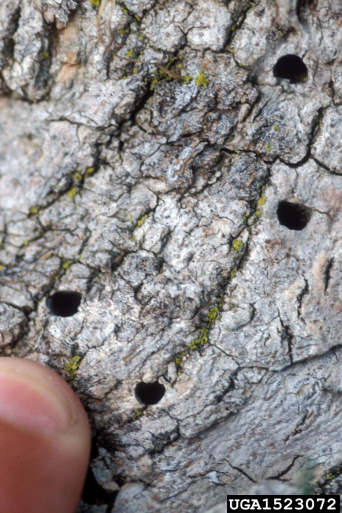
D-shaped holes
As adults emerge in the spring, they leave distinctive D-shaped holes in tree branches and trunks that are approximately 1/8 inch in diameter. The holes may not be visible on the lower trunk or branches of the tree in less severe or recent infestations. Also, they can be difficult to detect in deeply furrowed, thick bark. The tree may require climbing in the upper canopy where bark isn't as thick for detection of the D-shaped holes. The absence of D-shaped holes does not mean that the tree is not infested.
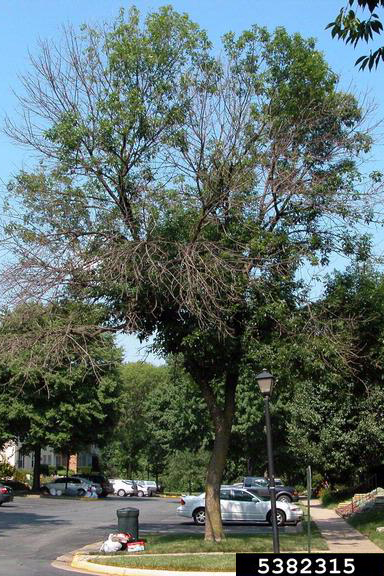
Tree canopy dieback
The EAB usually attacks the tops of trees first and proceeds downward. Most often, the tops of trees experience the worst dieback, but this is not always the case. Infested trees have been known to have sporadic dieback throughout the tree.
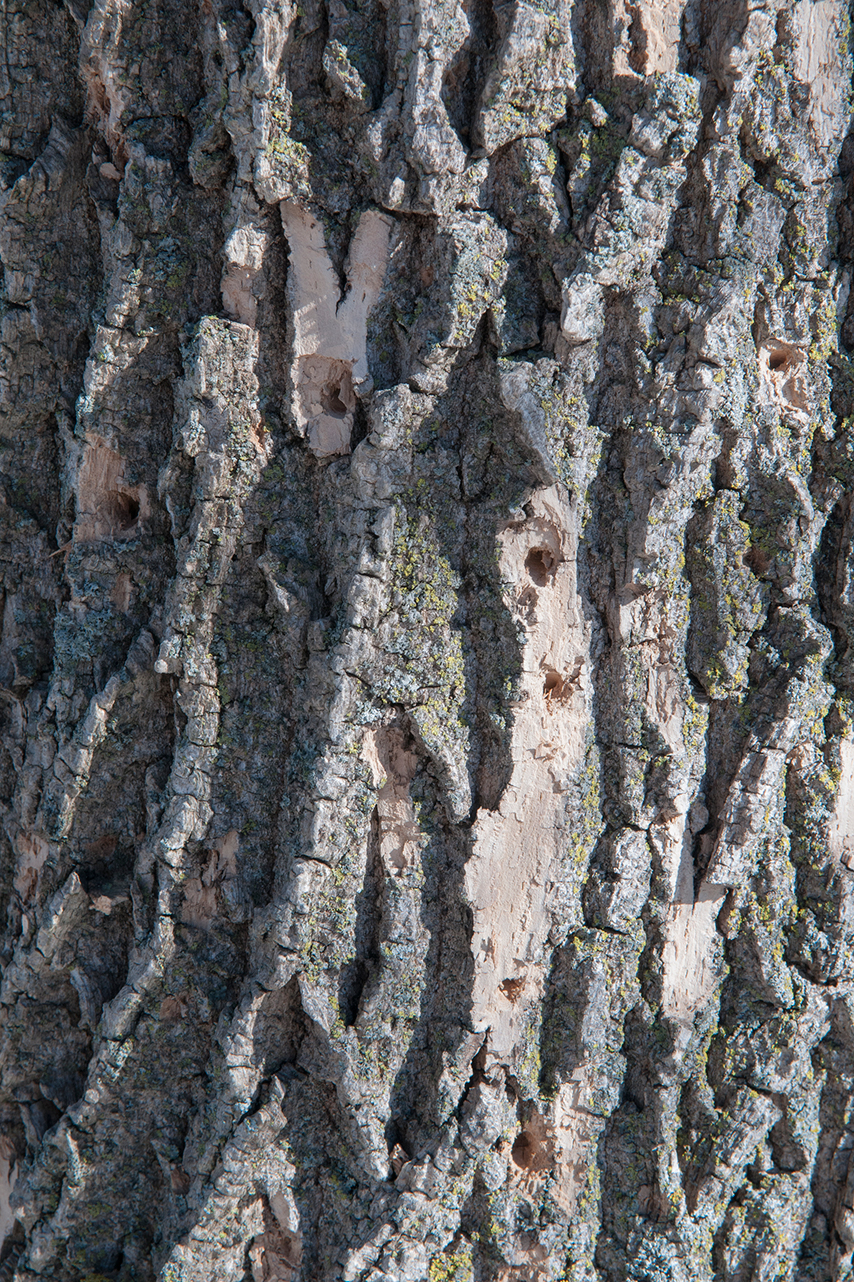
Woodpecker damage
Woodpeckers often feed on the outer bark of EAB-infested trees, resulting in a "scraped" look.
Trees infested with the EAB are generally stressed due to damage and may produce epicormic shoots either at the base of the trunk or in small amounts on the main trunk.
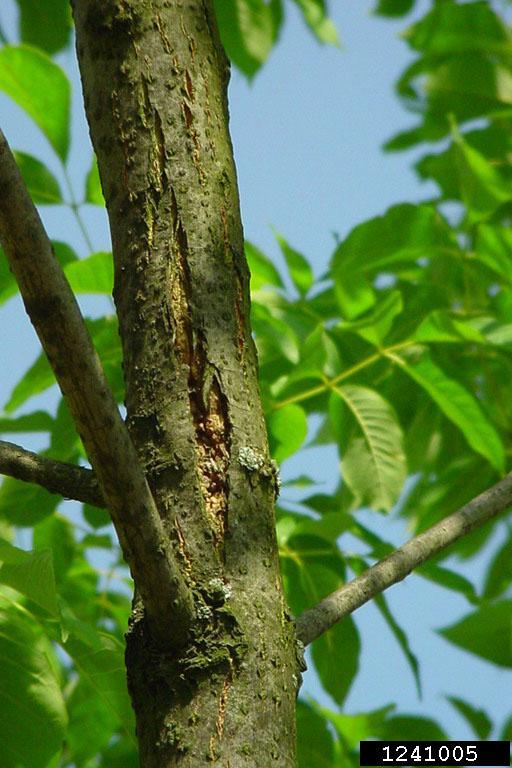
Splitting bark
Tree bark may split vertically on trees infested with the EAB as a result of larval feeding galleries, often revealing tunnels beneath.
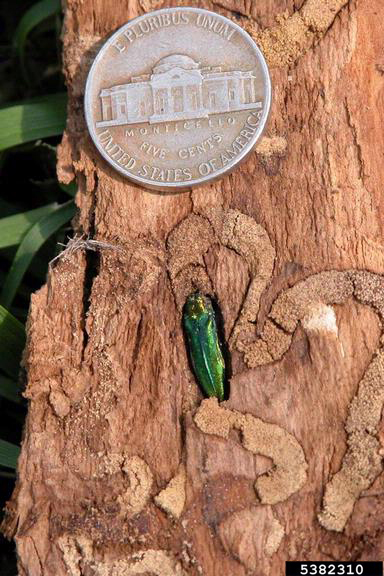
Larval tunneling
The EAB-infested trees will exhibit larval tunneling beneath the bark.
Management
Since 2002, when the EAB was first detected, many municipalities have removed most ash trees to reduce monetary impacts, financial restrictions, and labor intensities. Other municipalities limit ash tree removal to infested trees only.
Government quarantines play an integral role in preventing the EAB from spreading. The USDA Animal and Plant Inspection Service (APHIS) has federally restricted the movement of all ash products outside of the state of Illinois. Refer to up-to-date federal news releases. The Illinois Department of Agriculture has established quarantine zones throughout the state that regulate restricted articles, consisting of all ash tree species, the EAB adults and larvae, branches, lumber, firewood, nursery stock, roots, and green lumber, as well as composted and uncomposted wood chips. The restricted articles also include all hardwood firewood such as hickory, maple, and oak. Refer to up-to-date Illinois Department of Agriculture news releases.
In addition, the Illinois Department of Natural Resources (IDNR) prohibits transporting firewood that originated in a quarantined area to any state park, fish and wildlife area, natural area, campground, recreation area, or other property owned or managed by the IDNR.
As ash trees across the United States continue to be removed as a result of infestations, homeowners are turning to sawmills in order to reuse the lumber. A list of arborists, sawyers, and woodworkers can be found on the Illinois Emerald Ash Borer Wood Utilization Team website.
The Garden's Response
The Garden is taking several measures to protect ashes, which include about 450 in the collection. In addition, ashes make up about 20 percent of the McDonald Woods. Pesticides will be used to protect 43 key trees — two specimens each of all the primary varieties on site and in those key locations.
How to Protect Your Ash Trees
Many property managers and homeowners who own, or are charged with, the care of ash trees want to know how they can protect their trees. The first step should be to inventory and evaluate existing tree canopies with a professional arborist to gain an accurate picture of both the number of ash trees on a property and their condition. Once this inventory is complete, it will be easier to determine which trees are candidates for treatment and which are not.
Regardless of what the inventory and evaluation reveals, people with ash trees on their property in our region will need to budget for protective treatments or removal.
Currently, the most effective EAB treatment consists of systemic insecticide applications injected into the trunk of the tree or the surrounding soil. These injections spread through the vascular system of the ash tree and are ingested by the borers as they feed. While these treatments have proven successful in many cases, trees that have endured intense pressure from the EAB may not be candidates, as their vascular systems have been too badly damaged to deliver the injections to the feeding ash borers.
If this is the case, the only remedy is to remove the tree. Removal in a timely manner is important to protect property and people from falling dead branches.
Chemical Treatment
For more information and for approved insecticidal control options for dealing with the EAB, contact Plant information Service.

